'Dying on the streets': Homelessness crisis is top issue in Los Angeles mayoral race
- Oops!Something went wrong.Please try again later.
- Oops!Something went wrong.Please try again later.
LOS ANGELES - Homelessness is as prominent in the 2022 Los Angeles mayor's race as it is on the sidewalks, parks and other open areas in the nation's second-largest city.
In recent weeks, candidates have released detailed plans and touted their experience dealing with the issue in their bid to win over voters. More than a dozen candidates – led by U.S. Rep. Karen Bass; council members Joe Buscaino and Kevin de Léon and city attorney Mike Feuer – are in the race, with a primary scheduled for June followed by a runoff in November if no one wins a primary majority. Billionaire developer Rick Caruso also joined the campaign Friday.
As far as voter concerns expressed to candidates, homelessness "is definitely No. 1. A very close No. 2 is public safety," said Bass, who pledged to open housing units for 15,000 people during her first year in office. "I think it's the manifestation of the worst problem that's facing Los Angeles, which is growing and profound income inequality."
Bass, who released her plan to address homelessness in January and is considered to be a frontrunner in the election, isn't exaggerating.
Related video: Amid homeless crises in L.A., a group works to keep streets clean
Economic conditions, rising violent crime and the COVID-19 pandemic are major issues for Los Angeles voters. But the plight of unhoused people, visible in neighborhoods throughout the city, has become the top priority for many voters. In a December Los Angeles Times poll, homelessness surpassed all other concerns, with 94% of respondents considering it a serious (21%) or very serious (73%) problem.
The homelessness crisis is much more acute in Los Angeles compared with many other U.S. cities and its size and scope have been on full display this week with the Super Bowl media spotlight shining on Southern California. It's a life-and-death matter, with a December report estimating about 1,500 people without homes died in Los Angeles between March 2020 and July 2021.
High costs of housing fuel homelessness crisis
Once largely identified with downtown's Skid Row, homelessness has grown and is visible in parks, on sidewalks and at freeway underpasses throughout Los Angeles, including in affluent neighborhoods, as the unhoused population tops 40,000 in the city of 4 million people.
And voters are increasingly frustrated with the scope of the problem and the government's response, according to focus-group research released Tuesday by an L.A. civic group.
Large encampments have become political tinderboxes, with police removal of more than 200 people from Echo Park Lake in March, resulting in protest and confrontation, and camps in Venice, including one on the famed beach boardwalk, becoming another major point of contention.
"This problem has been around for a long time (but) we're past the tipping point now, the political tipping point. This is as potent a political issue as there is in the election coming forward," said Zev Yaroslavsky, a former L.A. city councilman and county supervisor who teaches at the University of California, Los Angeles' Luskin School of Public Affairs.
Frustration: Homelessness is biggest problem facing Los Angeles, residents say, and it's projected to get worse
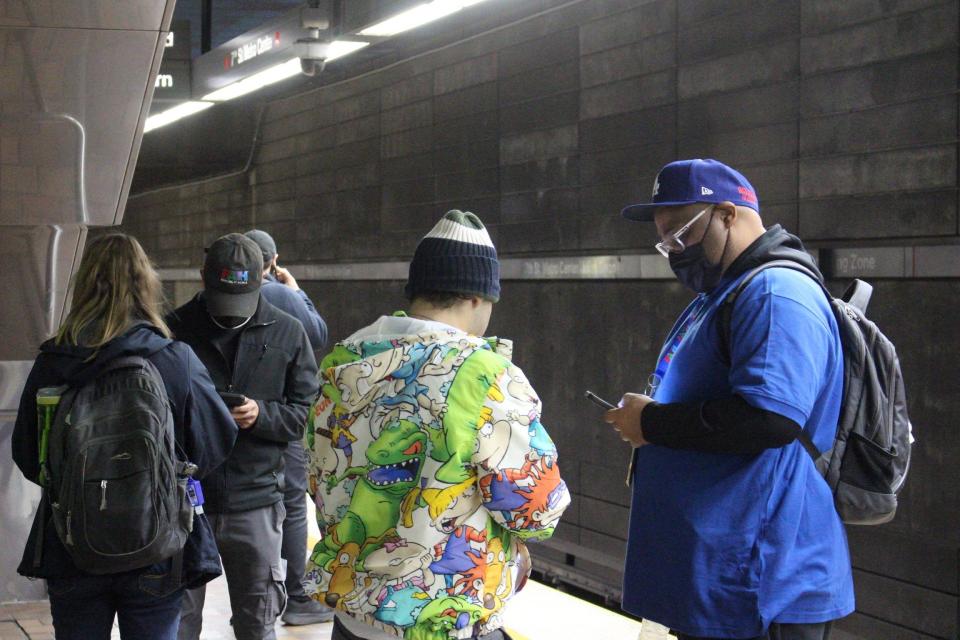
Activists and some residents have demanded more than talk from the mayoral candidates, including permanent housing and services for the unhoused. Meanwhile, neighborhood groups and many residents have pushed for an end to encampments.
Driving the homelessness crisis are the high cost of housing; the lack of affordable housing; and zoning regulations and neighborhood opposition that constrain development. Mental illness and substance abuse play a substantial role in homelessness too and the pandemic created financial and health pressures that pushed people toward the streets.
The sheer cost of housing is the main culprit, said Gary Dean Painter, a University of Southern California professor and director of the Homeless Policy Research Institute.
According to a September report, the median home price in Los Angeles County was $795,000, an all-time high. Correspondingly, rents also are pricey.
Crisis point: As national housing crisis spirals, cities criminalize homeless people, ban tents, close parks
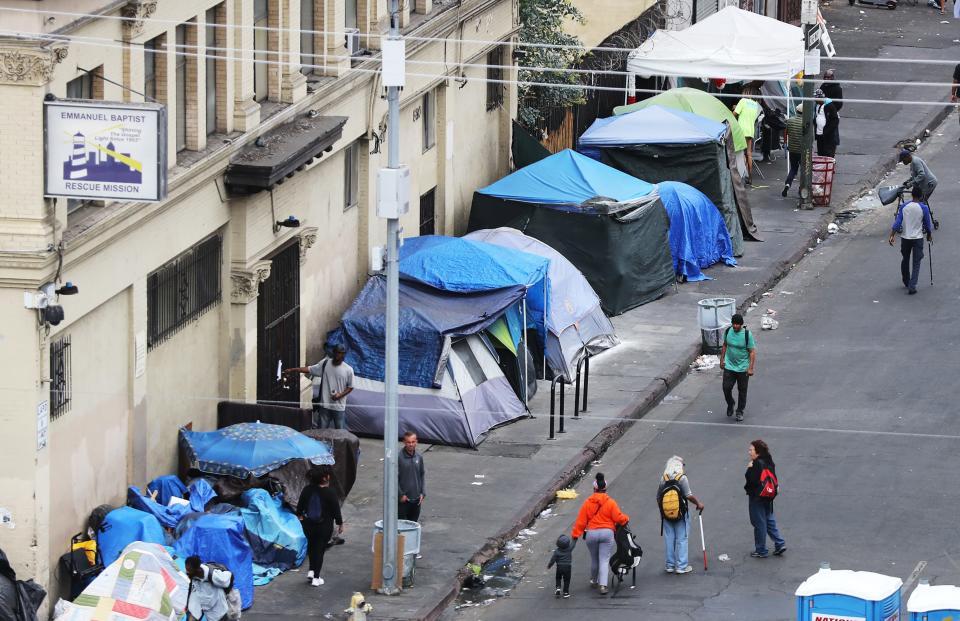
The roots of the problem go back to the 1970s, when zoning density limitations and environmental regulations meant that California cities, led by Los Angeles, could not meet the housing demands of their burgeoning populations, resulting in fewer new units and much higher prices than in a state like Texas, Painter said.
"People are paying a higher and higher percentage of their incomes as rent or toward housing costs if they are owner-occupiers, so that creates a strain on housing costs," he said. "And that's something that didn't happen overnight. That happened over decades. And so, … we need sustained action for decades to fix the ailing housing market."
Efforts to solve the problem are hampered by divided responsibility between the city and Los Angeles County, which includes 88 cities that also have varied approaches to the matter.
Bass and Feuer, who both said they would declare a state of emergency regarding homelessness on the first day in office, plan to focus power and accountability, at least in City Hall, in one official responsible for overseeing homeless efforts.
"If we had an earthquake, we'd have a FEMA general here on the scene, leading the recovery in Los Angeles," Feuer said. "We have the moral equivalent of that natural disaster. It's homelessness and no one's in charge."
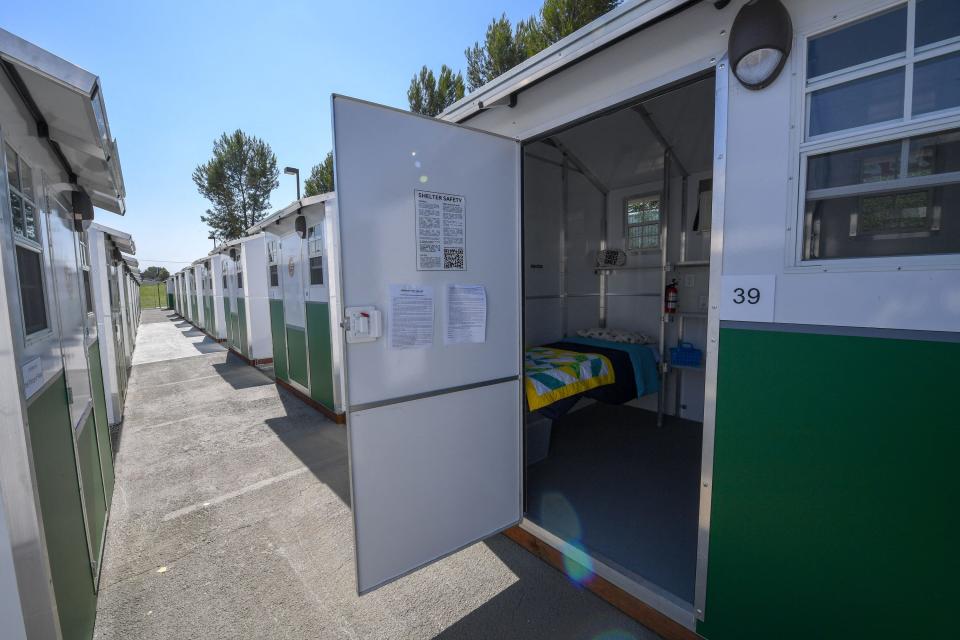
Bass pledged to appoint a high-level homelessness chief to coordinate an array of plans and services overseen by the city and she also emphasizes expanding mental health and substance abuse services. She said she is weighing the possibility of seeking a federal declaration, calling the current city-county collaboration "relatively dysfunctional. … There needs to be somebody in charge."
Temporary housing could get more people off the streets
The candidates' plans to address the homelessness crisis contain some similar proposals. Each candidate who has released a plan so far said they would create more housing, along with an array of social services.
And all emphasize the need to cut red tape in the process, providing needed services and finding ways to move unhoused people into units as quickly as possible.
Buscaino appears to take the hardest line toward encampments and sheltering on public streets and sidewalks. He is seeking signatures to get a strict street-camping ban, stronger than the city's "watered-down" restriction, on the November ballot. Under Buscaino's proposal, people who are homeless could be removed from public streets and sidewalks if they turn down two offers of shelter.
"We have seen dangerous encampments sprawl on every corner of the city of Los Angeles" that are the sites of violent crime, fires, drug overdoses and sex trafficking, said Buscaino, who favors creation of more temporary housing.
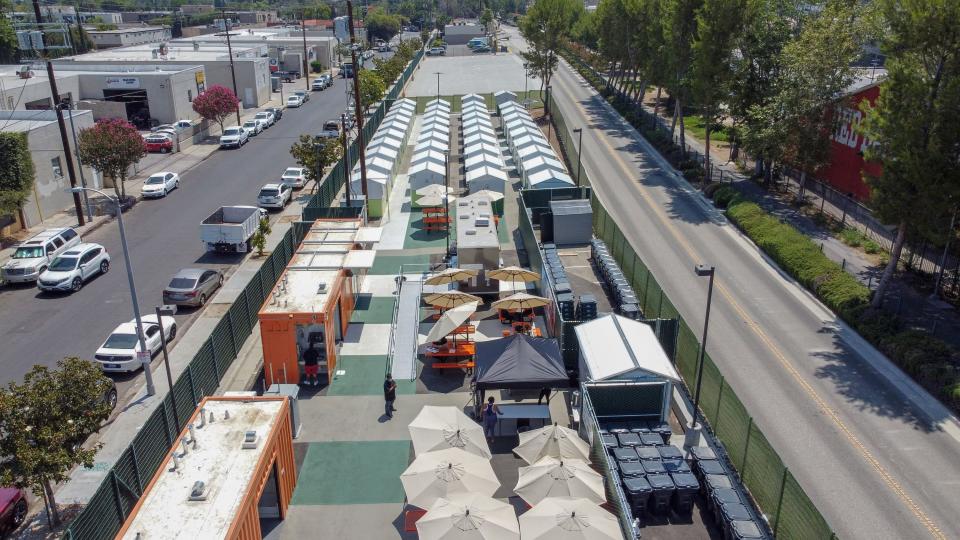
Under his proposed measure, "you've got a choice to go (to a temporary shelter or) move away and if you resist, you'll have some citation or arrest," said Buscaino, a former police officer. "Through the court-diversion program, the judge will order the individual to get help. Otherwise, they risk dying on the streets. Don't we want to save them?"
Candidates must woo political constituencies that can have varying priorities, such as those who simply want people experiencing homelessness off their neighborhood streets – no matter what it takes – to those who advocate for more permanent housing and services.
Feuer warned against false choices. "We have to be for safe and accessible public spaces for everyone and we have to be for intervening with people experiencing homelessness with compassion and housing and services," he said.
Meanwhile, de Léon pointed to conversion of hotel space and the building of relatively inexpensive "tiny homes" – small, prefabricated temporary housing units – in his district, which includes Skid Row, as part of his council initiative to create 25,000 new units by 2025. In October, the largest tiny-home community in the United States opened in his council district, with speed (90 days) and lower cost ($55,000 per unit compared to close to $600,000 for permanent units) cited in creating the 224-bed facility.
de Léon has faced opposition on different sides of the issue, from homelessness activists upset over efforts to move people from the streets and residents who unsuccessfully tried to recall him over a tiny-home project. He said while permanent housing is the eventual goal, providing temporary shelter has to be the immediate priority.
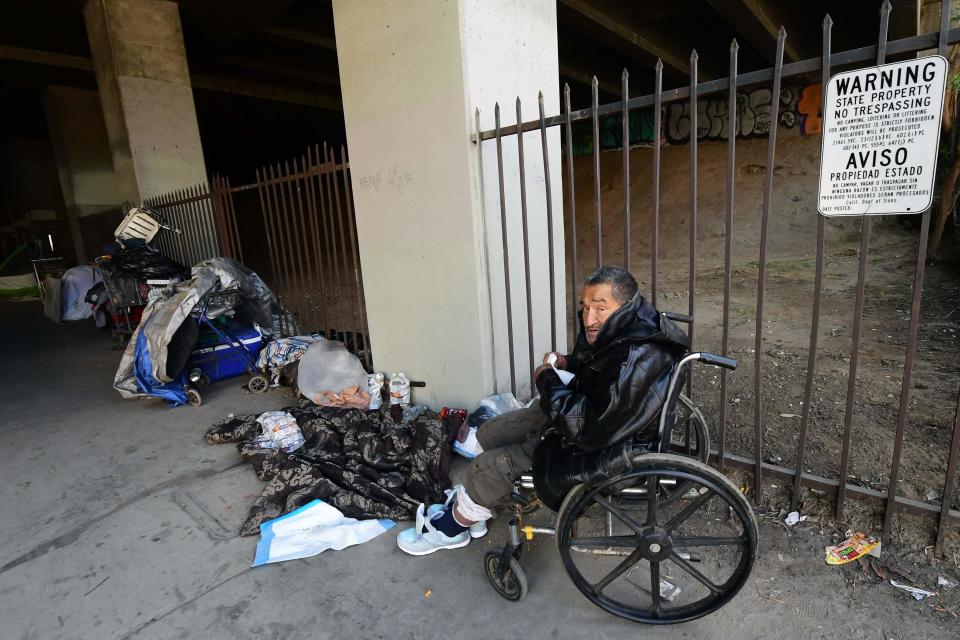
"My end-goal objective is to get (unhoused people) off the streets sooner rather than later. I'm not going to wait for the perfect to be the enemy of the good, that they should wither away until we have permanent housing, which is absolutely absurd. It's such a gross violation of human and civil rights, unhoused folks living on the street," he said.
High number of people experiencing homelessness are Black
The winning candidate will succeed two-term Mayor Eric Garcetti, who has faced extensive criticism over his handling of the city's homeless crisis. Many residents are angry the problem has worsened – the unhoused population jumped 16% between 2019 and 2020, according to a pre-pandemic count – despite voter approval in 2016 of a $1.2 billion bond designed to triple supportive housing, which Garcetti championed.
Perhaps not surprisingly, activists aren't impressed with campaign pledges after witnessing the problem expand over the years.
"I've reviewed all of the plans that have been released by various candidates and for the most part, it's the same soup warmed over," said Pete White, executive director of the Los Angeles Community Action Network (LA CAN), an anti-poverty organization focused on housing. "We continue to see and hear things that we've seen and heard from the current administration," adding that Garcetti has handled the problem "horribly."
Although there's a greater acknowledgment now of the reasons why Black people are disproportionately represented in the homeless population – roughly 40% even though L.A.'s Black population is closer to 9% – including the roles segregation and redlining have played in making housing more expensive for people of color, government hasn't taken responsibility, White said.
"It's not a secret in Los Angeles that houselessness is deeply steeped in race," White said. "And we have to atone for that now."
Many Los Angeles voters, who also approved a 2017 county ballot measure raising the sales tax by a quarter-cent to pay for homeless services, said they are increasingly frustrated with what they see as a lack of results, according to focus group research released Tuesday by The Committee for Greater L.A., a local civic group.
Residents witness homelessness on a daily basis, maintaining compassion for unhoused veterans and those dealing with mental illness or addiction, according to the focus-group findings. There is fear of people experiencing homelessness and especially of encampments, but not hostility, according to the findings.
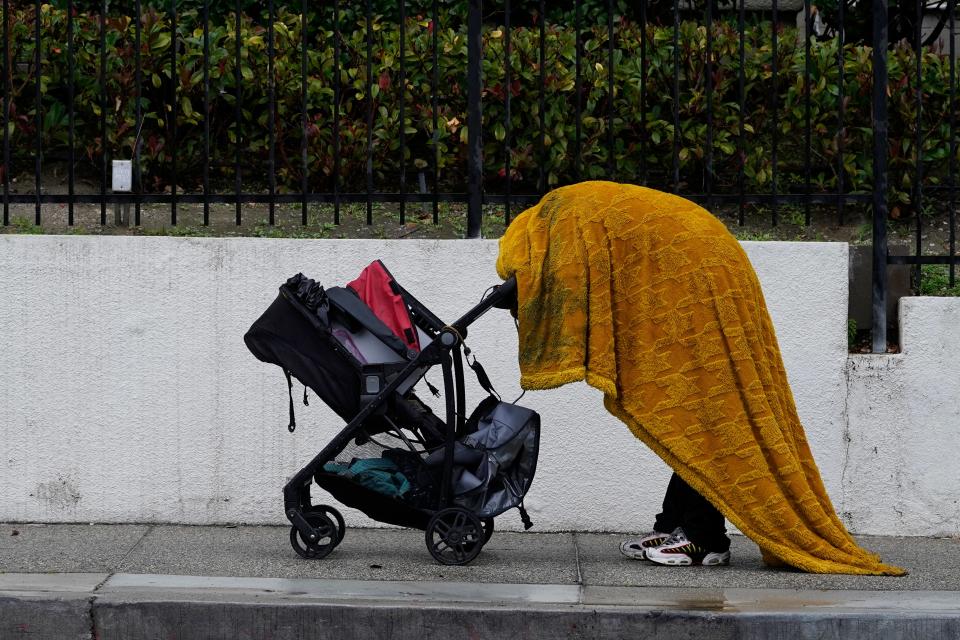
Higher visibility of homelessness is "a double-edged sword" that can increase empathy but also hostility, leading to polarization, said Mike Dickerson, policy and education co-chair of KTown for All, a Koreatown neighborhood organization that works with unhoused neighbors. He said he is worried about "empathy fatigue" in the wider community that could lead to punitive measures.
"I think we've seen the rhetorical and political divisions get darker on this issue over the last several years," he said. "On the other hand, when people start talking to (unhouse people) as neighbors, that is an empathy-building experience."
Beyond helping people experiencing homelessness, the next mayor also must focus on ways to keep a large, financially vulnerable population from falling into that situation, said Jennifer Hark Dietz, CEO of the nonprofit People Assisting the Homeless.
"We're going to have a never-ending cycle of homelessness if we don't focus on prevention," she said. "We need to see twofold: What happens when (unhoused) folks enter our system (and) how do we prevent them from coming into the system altogether?"
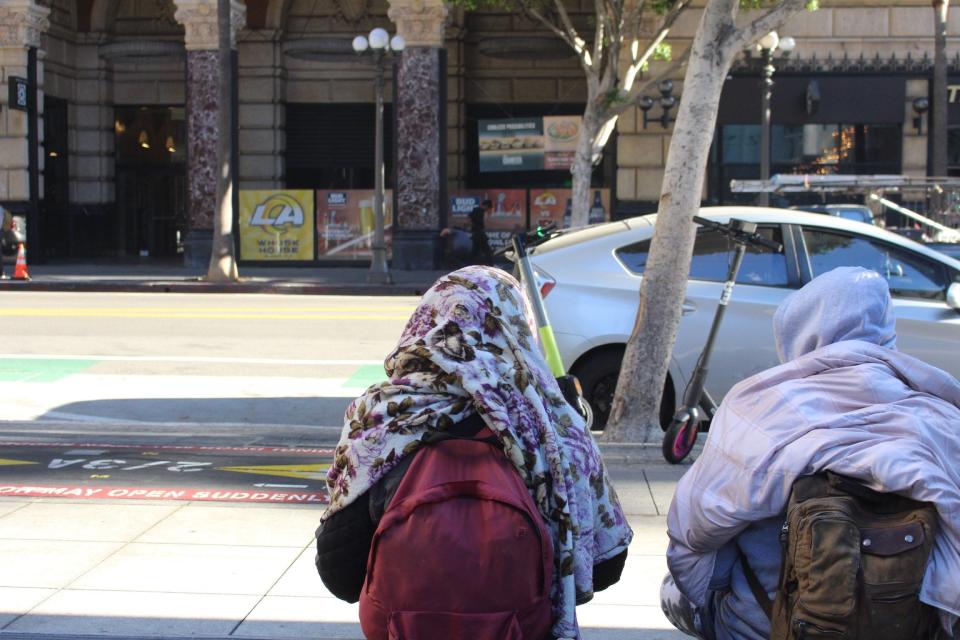
This article originally appeared on USA TODAY: Los Angeles homelessness crisis tops voter concerns in mayoral race

